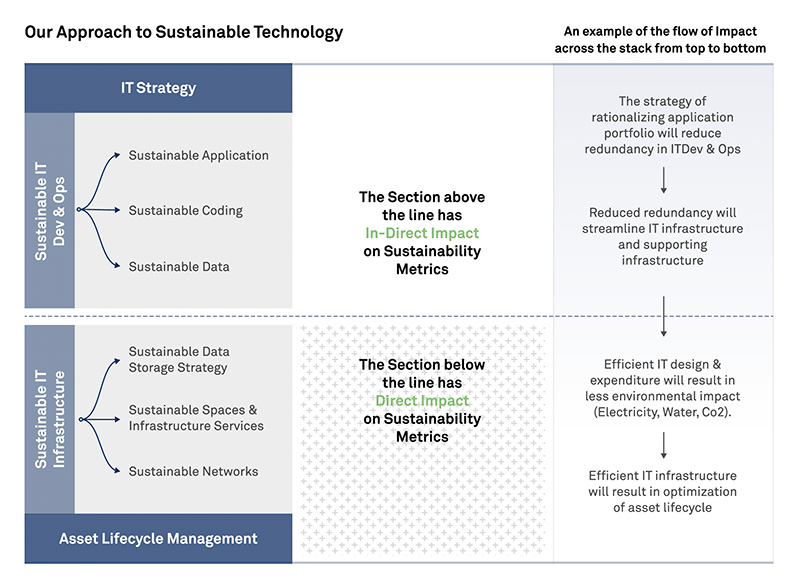How AI will impact your business
Shikhar Ghosh, Professor, Harvard
Watch Now
07:03 Minutes The average reading duration of this insightful report.

The aviation industry is expanding rapidly, making it imperative to adopt sustainable practices. Airports worldwide are taking significant measures to reduce their carbon footprint, conserve natural resources and encourage social responsibility but still more needs to be done.
Explore a sneak peek of the full content
The aviation industry contributes to global carbon emissions, with airports accounting for about 2-3% of that contribution. While this is not very significant and airports are committing to Net-zero, they impact the environment in many other ways. Airports consume significant amounts of energy and water and generate waste equivalent to small cities and contribute significantly to noise pollution leading to health disorders in the neighbourhood. Airports also promote economic growth through trade, tourism, job opportunities, support for local businesses, and regional development and hence a sustainable balance is the need of the hour.
Airports around the world are recognizing the importance of sustainability and are implementing various eco-friendly initiatives to reduce their ecological footprint. Four key areas of focus have emerged: energy, waste, water, and noise. Some leading airports have already implemented sustainable initiatives, such as using recycled materials for construction and mandating the use of reusable tableware in food and beverage establishments. Emerging ideas include hydrogen fuel cells and bio fuels (for energy), AI and IOT Sensors for optimal water usage, hydrothermal liquefaction and AI/ML to detect recyclables for waste and AR safety programs and Noise insulation techniques for Noise impact reduction. Others need to assess their current state and take steps that best suit their situation. Download Complete Research
Credits
Author@lab45: Deepika Maurya

15:13 Minutes The average duration of a captivating reports.

Technology both improves and harms environmental sustainability. It’s is a double edged sword. While emerging technologies such as Al, loT, AR/ VR and others are being used to help achieve sustainability goals, these technologies when put into mainstream adoption will leave a hefty environmental footprint.
If we continue on our current trajectory, datacenters will leave a huge footprint on our planet. Data centers contribution to Co2 Emissions will go up 12X by 2030 and their consumption of water will go up 17X in the same time. Needless to say, they will be huge contributors to E-waste in landfills.

We have developed a framework based on the IT lifecycle consisting of a stack of building blocks. We believe this framework will help facilitate a comprehensive and structured implementation of a Sustainability strategy within the data center.It is quite intuitive and easy to identify potential actions that can be taken and what their impact would be. Download Complete Research
As organizations move with sustainable strategies, we highlight key insights that will help drive these strategies. We also identify metrics that can be used to measure progress.
We have painstakingly built a 5-level maturity model that can be used as a guideline to assess where the organization stands. We also give insights on what would be required to move to the next level.
We finally put this all together to see how organizations should approach their Sustainability journey.
Credits
Author@lab45: Hussain S Nayak, Sujay Shivram, Chandan Jha
Author@Wipro: Susan Kenniston

14:40 Minutes The average duration of a captivating reports.

Foundational for identity verification and rights access, government-issued IDs face breaches and inefficiency within centralized systems. Enter Decentralized Identity solutions, redistributing verification control to individuals. But is it applicable for equally for all government services?
Decentralization of government-issued IDs is a complex issue with potential benefits and drawbacks. Whether government issued Ids should be decentralized or not depends on various factors that we delineate. Any decision on decentralization should be carefully considered and implemented with caution to ensure that they do not breach security or undermine the government’s programs. Download Complete Research

We detail out the current Issuing process typically followed by governments today and identify several challenges and issues that face it today. This includes Ids like the Passport, Licenses, Voter cards and Social security cards. All of them are critical and everyone can do with an easier and more fool proof process for the same.
We evaluate the different government functions such as Education, healthcare, elections, security, taxation, etc and analyze which of these would be most suitable to be decentralized. We map them on a matrix of Complexity & Coordination and the Need for scrutiny to give us an easy framework for assessment. Download Complete Research
We end by considering the long term onjectives and intended outcomes of such an exercise.We feel that Decentralized Identity solutions can rebuild trust in public institutions by empowering residents with data control.
Credits
Author@lab45: Sujay Shivram, Abhigyan Malik
This is your invitation to become an integral part of our Think Tank community. Co-create with us to bring diverse perspectives and enrich our pool of collective wisdom. Your insights could be the spark that ignites transformative conversations.
Learn MoreKey Speakers
Thank you for subscribing!!!
